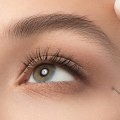Botox is a popular treatment for a variety of conditions, from wrinkles to depression. But what happens when you use it for a long period of time? Does it weaken the muscles over time? In this article, we'll explore the effects of Botox on the muscles and how it can affect your appearance in the long run.When you use Botox, the muscles in your face will be temporarily weakened. This means that you won't be able to make as many facial expressions as you normally would. Over time, these muscles may become weaker due to lack of use.
This could mean that you won't need to use Botox as often, but it could also mean that you won't get the same results from it. In addition, repeated use of Botox could make your skin appear thinner. This is not typical, but if you start using Botox in your early 20s, there is a greater chance of this happening. Your skin may also take on a wavy appearance or look different in color.
If any of these things occur, having a conversation with your provider can help address the problems. When it comes to wrinkles, it may not be as simple as a single option, but working with your dermatologist or other medical provider can ensure that your condition or problem is addressed as fully, comprehensively, and effectively as possible. If you discontinue using Botox, the muscle will most likely regain strength due to the facial nerve animation effect on these muscles. It is believed that with regular Botox use, muscle function will weaken over time and then justify lower Botox use.
Injecting small amounts of botulinum toxin into target muscles temporarily weakens and relaxes them, according to the American Academy of Dermatology. Drugs that can alter the effects of botulinum toxin include aminoglycosides, cyclosporine, D-penicillamine, muscle relaxants, especially non-depolarizing curare-type blockers and succinylcholine, aminoquinolones, quinidine, magnesium sulfate and lincosamide. The lack of sensitivity to botulinum toxin can be attributed to a number of reasons, from an inadequate diagnosis to an inadequate selection or injection of the target muscle, or to the use of an insufficient amount of botulinum toxin to cause the desired pharmacological result in the presence of antitoxin neutralizing antibodies. If you're interested in preventive Botox, experts recommend reading about the procedure, getting an idea of how you'd like to look, and finding a qualified medical professional you trust. Another rare complication of cosmetic use of botulinum toxin on the lower face is difficulty opening the mouth, which results from paralysis of the lateral pterygoid muscles. In an animal study, Fortuna et al analyzed changes in muscle mass and contractile properties in rabbit muscles that received repeated injections of botulinum toxin.
These include “hourglass deformity” secondary to botulinum toxin type A, treatment for migraines, and a patient with multiple facial muscle atrophy from hemifacial spasm injections. Each superciliary corrugator muscle was injected with 2.5 units at two different sites, for a total of 5 units per muscle. After receiving Botox, avoid going to bed immediately, rubbing the treated area, or doing activities that require the head to be in unusual positions. In conclusion, using Botox for a long period of time can lead to weakened muscles and changes in skin appearance. It's important to talk to your doctor about any concerns you have about long-term use and make sure you understand all potential risks before starting treatment.


